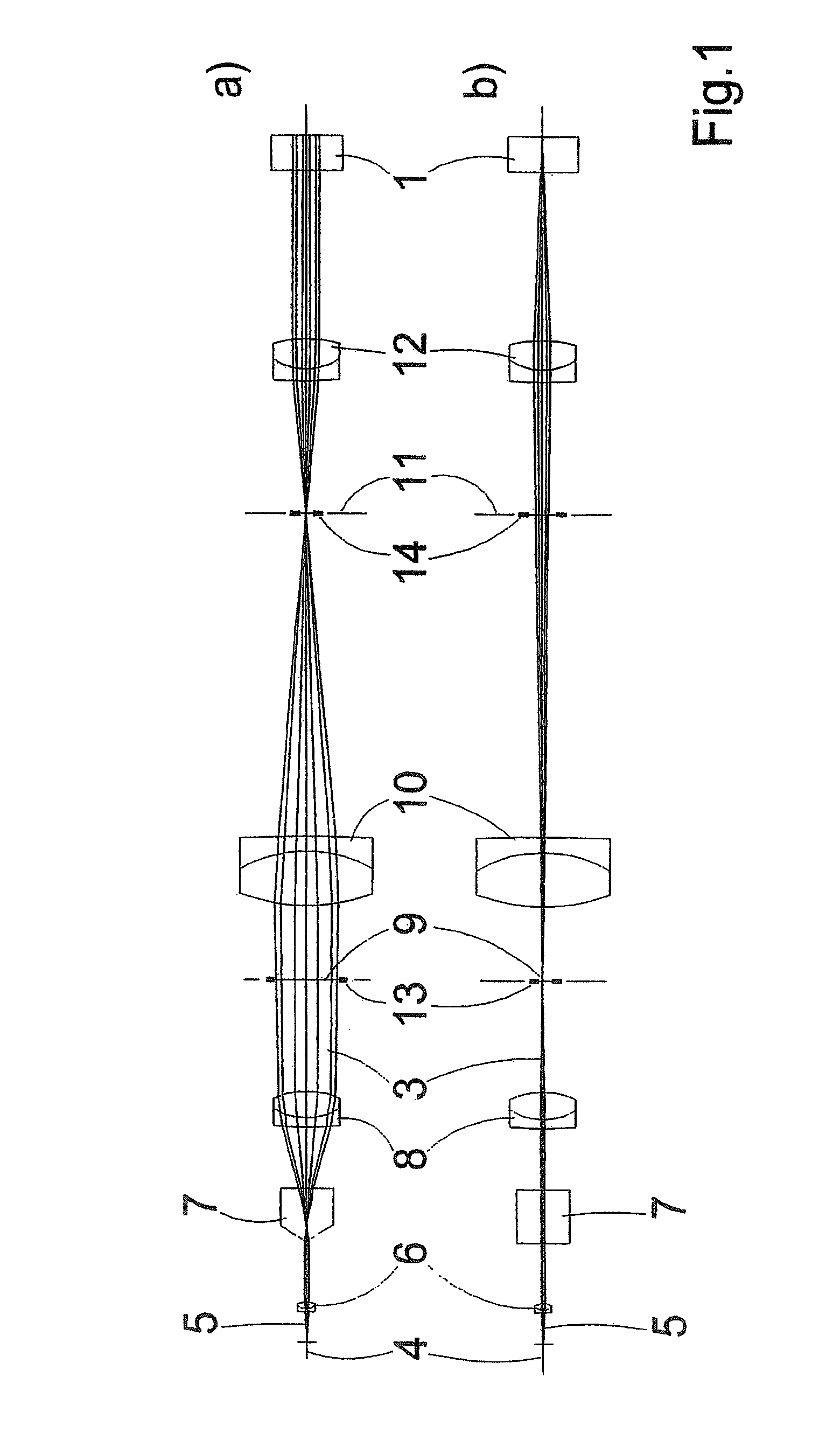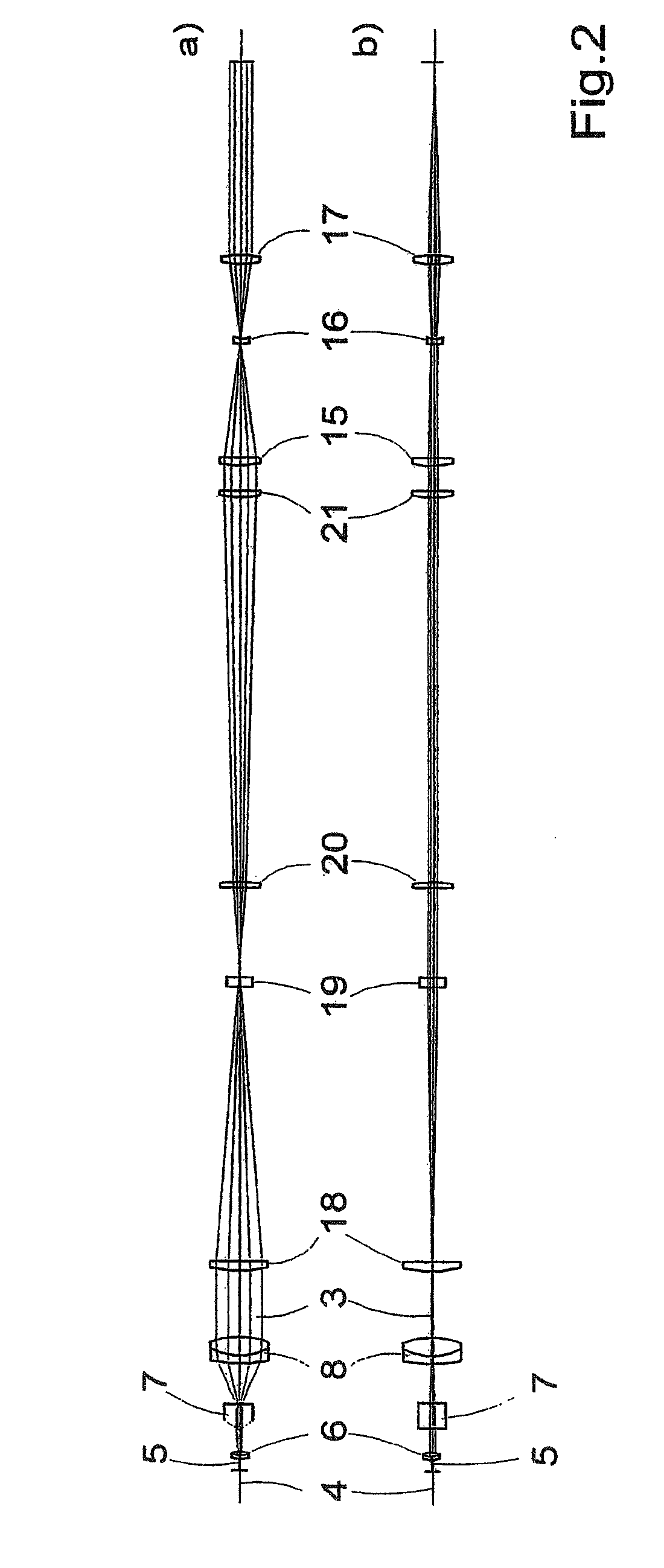Optical arrangement for the production of a light-sheet
a technology of optical arrangement and light sheet, which is applied in the field of optical arrangement for the production of light sheets, can solve the problems of inability to uniform illumination of inability to change the geometry of the light sheet, and inability to observe the specimen plane being examined. achieve the effect of greater efficiency
- Summary
- Abstract
- Description
- Claims
- Application Information
AI Technical Summary
Benefits of technology
Problems solved by technology
Method used
Image
Examples
Embodiment Construction
[0061]In FIG. 10, which will serve in the following for a brief explanation of the principle of selective plane illumination microscopy (SPIM) in the prior art, a specimen 1, for example, a biological substance, is surrounded by a transparent gel 2. This specimen 1 is a three-dimensional specimen 1 which extends in the drawing plane and perpendicular to the drawing plane. It will be assumed that the gel 2 is shaped to form a circular cylinder with an axis of rotation oriented perpendicular to the drawing plane.
[0062]As was already stated above, three-dimensional images of the specimen 1 are obtained on the basis of a plurality of optical sections through individual specimen planes by the SPIM technique. It will be assumed that the plane of the specimen 1 to be observed has the thickness d in the drawing plane.
[0063]In order to observe this plane, a light sheet 3 having a length 1 and a thickness d in the drawing plane which remains as uniform as possible along the entire length 1 an...
PUM
 Login to View More
Login to View More Abstract
Description
Claims
Application Information
 Login to View More
Login to View More - R&D
- Intellectual Property
- Life Sciences
- Materials
- Tech Scout
- Unparalleled Data Quality
- Higher Quality Content
- 60% Fewer Hallucinations
Browse by: Latest US Patents, China's latest patents, Technical Efficacy Thesaurus, Application Domain, Technology Topic, Popular Technical Reports.
© 2025 PatSnap. All rights reserved.Legal|Privacy policy|Modern Slavery Act Transparency Statement|Sitemap|About US| Contact US: help@patsnap.com



